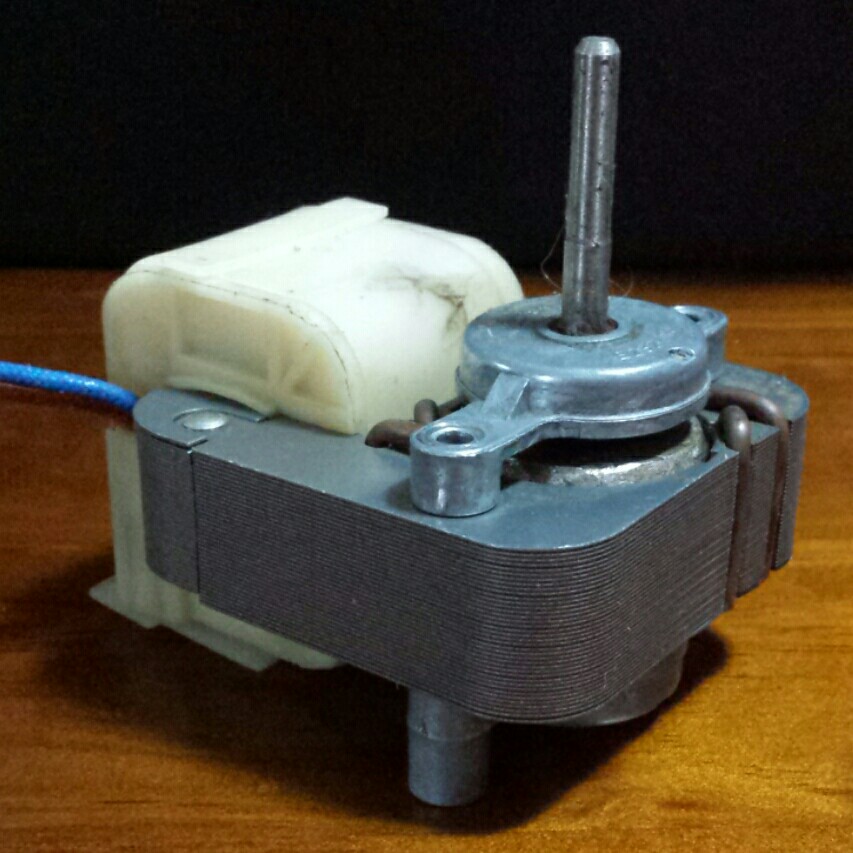I have one of those integrated bathroom 3-in-1 ceiling units (light, heat and exhaust fan).
Recently the fan spontaneously stopped working. I took the unit down to inspect the fan motor and took it to an electrical service person to see if it could be mended, or if not to hopefully source a replacement. The techie pronounced the motor dead and confirmed my fears that replacement parts are not available from the manufacturer, one typically has to replace the whole 3-in-1 unit.
I despise the disposable mindset of modern consumer appliances so I went looking for another solution. I found A/C fridge evaporator fan motors were widely available and one 'universal' motor from an online retailer that remarkably had the same dimensions for the mounting posts and similar appearance to my busted one (albeit much lighter), so I thought I would try that.
The following specs are provided for the new motor:
240Volts AC, 10Watt, 50/60Hz. Shaft length 30mm, shaft diameter 3.17mm, total depth 90mm from tip of shaft to back of mounting knob.
Here are the terminals on the 3-in-1 unit (plastic fan shroud with lamp sockets) with the fan removed. The original motor had two writes running into the right-hand-side of the Fan and Neutral terminals.
So I successfully fitted my new motor and connected the two wires to Fan and Neutral, but on hitting the switch, it didn't give so much as a twitch. I tried swapping the two wires (my understanding is for A/C motors this shouldn't make any difference) but it still didn't work.
My questions:
- This should've worked, right? An A/C motor is an A/C motor, so a straight swap like this should be okay?
- Have I killed my new motor? How does a motor like this (or particularly the original) die?
- What kind of tests can I do to confirm whether my motor is in working condition, or was DOA, or to isolate the source of the problem elsewhere? I've done some simple continuity tests of the connecting wires but I don't know what else I can test. (I should have tried wiring it to Light to rule out any issue with the supply-side wiring, but I didn't think of it...)
Thanks in advance.
Edit: The 3-in-1 is an Airflow Sunshine model 6600A, manufactured by Clipsal. Here's a picture. It's seen on page 5 of this brochure. Also on page 25 of this catalogue with technical data, although the unit depicted is slightly different to mine. I've contacted Clipsal and they've said they don't provide parts (and it's a discontinued model).



